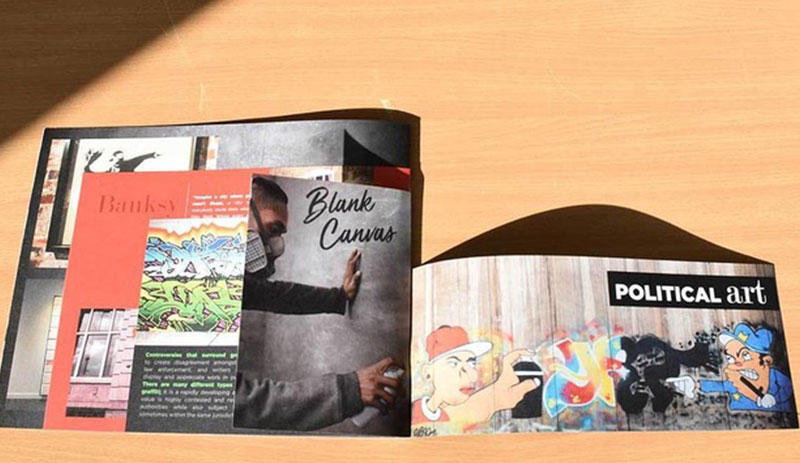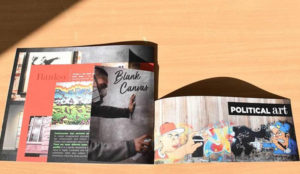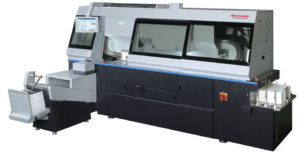
by Hallie Forcinio, contributing writer
PostPress

Bindery operations face numerous challenges. Whether a trade binder/finisher or a department within a commercial printer, binderies must combat a proliferation of shorter runs, growing demand for product differentiation and shortages in skilled labor, plus the need to make a profit and deliver jobs on-time with a faster turnaround.
Several factors are impacting the rising number of short-run jobs, including shorter intervals between updates, more personalized products, a shift from offset to digital printing and the need for just-in-time inventory.
The increasing market share occupied by shorter runs encourages commercial printers to establish or upgrade in-house binderies.
“Trade binderies still tend to handle the higher volume, longer run lengths,” said Paul J. Steinke, national sales manager, Standard Finishing Systems. “In many cases, it’s hard to send out a job if it’s short run and very quick turnaround.”
Demand for product differentiation prompts the creation of unique, captivating pieces such as particularly small or particularly large books, gatefold covers, waterfall pages or a book made from six differently sized sheets. The latter can be produced on the iSaddle system from Duplo USA Corp., which is capable of running 4,500 books an hour with up to 120 pages.
“We are constantly looking for what we can provide to make a binder offer unique solutions that also allow them to charge a premium,” said Rick Salinas, vice president of marketing at Duplo.
But, the biggest challenge for binderies, in-house or trade, are labor costs and staffing difficulties. “Just about every customer that we bring into the demo center is worried about hiring and retaining operators,” said Steinke.
Automation

As a result, equipment is becoming more automated and user-friendly, with features like icon-based touchscreen user interfaces, which simplify operation for an operator who may be less skilled and less likely to be dedicated solely to bindery tasks. There’s also a trend toward standardization of user interfaces so operation is similar machine-to-machine.
“With the growing challenges facing the printing industry to find skilled labor, Duplo has focused on automating the difficult set-up processes,” reported Salinas. “This allows binders to train staff much quicker, and the skill level required to produce high-quality books has been greatly reduced,” he explained.
With automation being top-of-mind at many binderies, it’s no surprise that the most popular equipment from Duplo are its DC-616, DC-646 and DC-746 slitter/cutter/creasers. Describing the machines as a “bindery in a box,” Salinas said, “With a single machine, you can create a highly complicated finished piece in a single pass with very little operator skill required.”
Examples include a tent card with start/stop perf or a coupon card with start/stop perf in both directions with a fold-over tab that can be completed on one machine in one pass. “Add our IFS integrated fold system and we can create the complicated piece all the way to the final fold in one pass,” he explained.

“Our partnership with EFI utilizing EFI Jobflow [print automation software] means many steps can be completely automated,” said Salinas. Finishing is reduced to loading the paper and hitting a green button. The machine feeds the sheet, reads the barcode, calls up the finishing template sent via Jobflow and the entire finishing process is completely automated.
Horizon brand cutters and trimmers, stitchers and binders, and diecutters – the top sellers at Standard Finishing Systems – offer similar capabilities and meet the JDF standard.
“That means the JDF data to print the job now can be networked to bindery equipment,” said Steinke. The result is greater accuracy. “Everything works from the same job file so there is less chance of operator error.”
Nevertheless, short-run automation has been a tough sell to trade binderies. According to Salinas, many are missing a golden opportunity to support hundreds of small printers that just do not have the equipment or space to produce jobs in the 5,000 to 50,000 run length. “Targeting this group is critical for the survival of trade binderies,” he said.
Meanwhile, bindery equipment makers strive to stay ahead of marketplace needs. In fact, Duplo studies the industry to identify trends and determine what is needed to help trade binders succeed.
“I spent the entire week with two engineers from [Duplo’s] factory visiting trade binders in the Chicago area looking at the challenges they are currently facing. More than that, Duplo studies all the steps from set-up to completion to see where steps can be simplified, improved or eliminated,” said Salinas. “It is a very time-consuming process but vital to creating the next industry-disrupting breakthroughs.”
Both firms rely on regional managers to help stay in touch with customers. In addition, Duplo utilizes a dealer reseller network and strategic partnerships with all the major digital press manufacturers.

accommodates runs of one. Automated adjustments for roller height, nipping height and side glue application minimize setup time. Interchangeable glue tanks simplify switch between PUR and
EVA adhesives.
Standard Finishing Systems uses the information gathered from its regional managers to provide feedback to Horizon, which is headquartered in Japan where an extensive Research and Development department continuously invents new products.
“We also bring customers into our demo center,” said Steinke. Tradeshows are another avenue for customer contact. “We participate in all the major shows, as well as smaller shows and events organized by digital print vendors like HP and Canon.”
What’s next?
Salinas predicts the golden opportunity in finishing lies in embellishment.
“Studies have proven that unique print and unique finishing drive response rates. These types of pieces also drive a premium price,” he said. “Trade binders need to start looking at how to create the unique and different that allows them to stand out and avoid the commodity finishing trap.”
Steinke believes the labor situation will continue to influence efforts to reduce touchpoints in the printing and finishing process. This will translate into ever-higher levels of automation and integration between machines.
“We already are seeing more requests to interconnect binders in line with trimmers. The fewer times a piece has to be touched, the more efficient the manufacturing process, the quicker the turnaround and the lower the risk of waste,” said Steinke.

